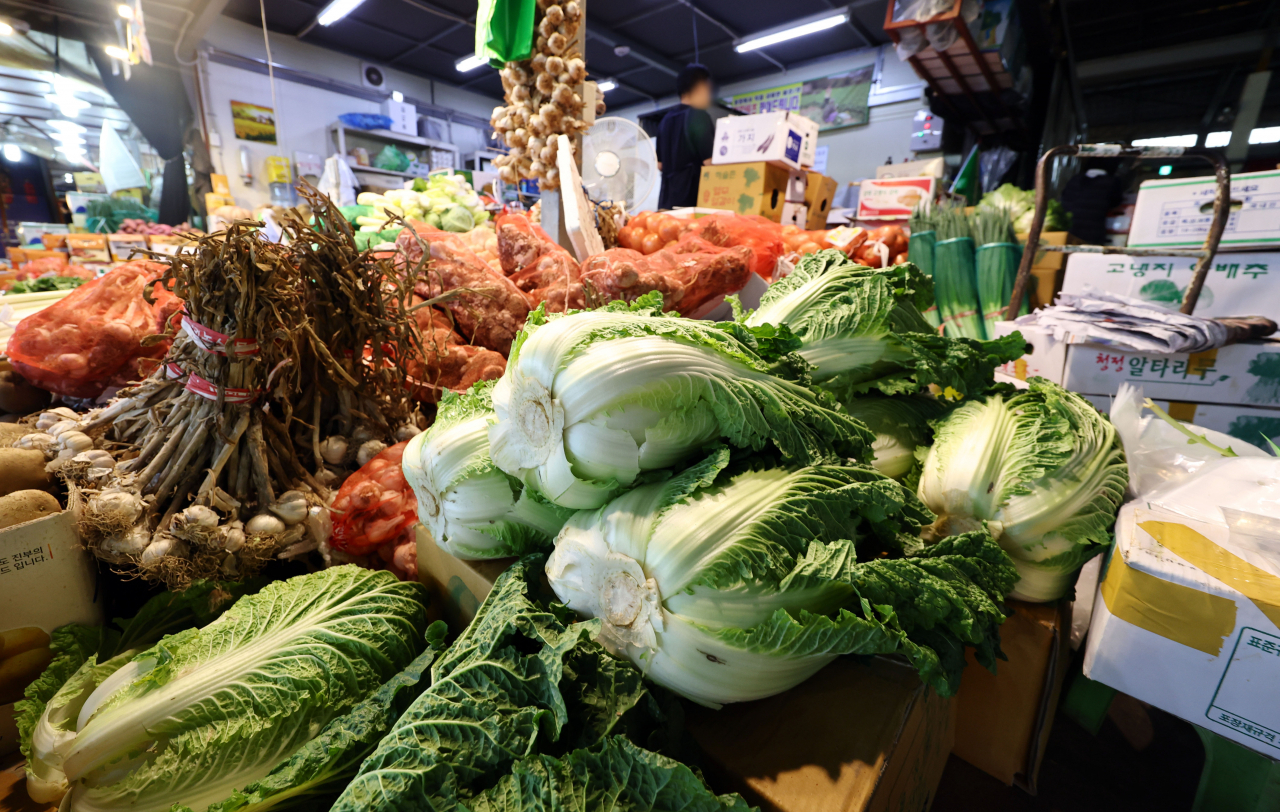 |
(Yonhap) |
Cabbage prices alert
When the weather starts to cool, one particular product becomes critically significant to South Korea’s price monitoring authorities: cabbages. As the main ingredient in the most widely consumed type of kimchi, napa cabbage prices directly influence the cost of living here, with ripple effects felt in far-reaching areas, from school cafeterias to military barracks.
Signs of strain are already visible this week with more than a month to go until the nationwide kimchi-making season, or gimjang, in late fall and early winter.
On Wednesday, the Korea Price Research Center predicted that the average retail price of a head of cabbage in November, the onset of gimjang, will be 22.5 percent higher than last year.
Analyzing cabbage supply trends and price patterns from previous years, the think tank projected that a head of cabbage will sell for an average of 5,300 won ($3.89) next month. If so, this will mark the first time that the retail price of cabbage has exceeded 5,000 won per head, it said.
Cabbage prices in November have been steadily climbing, the center said, from 2,981 won in 2020, to 3,480 won in 2021, 3,848 won in 2022 and 4,327 won in 2023.
The predicted price for next month is, however, is around 40 percent lower than current prices, as this year’s unusually long, hot summer and heavy rains have driven up vegetable prices, including cabbage.
The wholesale price of a head of cabbage is currently around 8,900 won, a 128 percent year-on-year increase, according to Korea Agro-Fisheries and Food Trade Corp.
Prices usually drop as cabbage harvests ramp up in November, with the lowest prices typically recorded in December and January.
The Ministry of Agriculture, Food and Rural Affairs is taking steps to stabilize vegetable prices ahead of the kimchi-making season and plans to introduce measures to ensure a steady supply of kimchi ingredients late this month.
Kimchi, especially the variety made with cabbage, is a staple on Korean tables. In addition to cabbage, the iconic pickled and fermented dish requires over a dozen other ingredients: radish, red pepper powder, garlic, green onion, chives, onion, ginger, mustard greens, water parsley, pear, sea salt, salted shrimp, and anchovy fish sauce.







